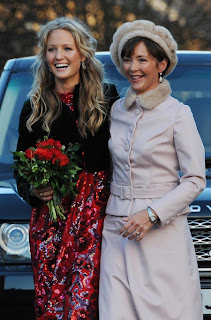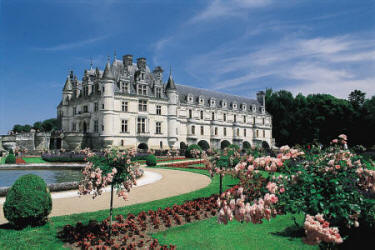Bran Castle is often dubbed "Dracula's Castle" due to its literary connection to Count Dracula in Bram Stoker's literary masterpiece, Dracula. His book was adapted into a motion picture that spawned many versions across generations. However, there are no documents that could prove that Bran Castle was the royal fortress mentioned by Bram Stoker in his book.
For many decades, Bran Castle became the object of fantasy and curiosity among researchers and travelers because of the myth of Count Dracula who, according to Stoker's book, tortured and murdered people in his castle and drank their blood.
Count Dracula
In later centuries researchers would claim that Count Dracula in Bram Stoker's book was loosely based on the story of Vlad III, called the Impaler, the Prince of Wallachia, a cruel and brutal ruler who had a horrible habit of torturing and impaling his enemies.
In his book, Dracula, Bram Stoker’s character, Count Dracula, is a Transylvanian aristocrat who lived in a castle located high above a valley perched on a rock with a flowing river below in the Principality of Transylvania.
This character is often confused with Vlad Tepes (Vlad III the Impaler), often known as Vlad Dracul. He was a Wallachian Prince with a castle, now in ruins, located in the Principality of Wallachia. Because Bran Castle is the only castle in all of Transylvania that actually fits Bram Stoker’s description of Dracula’s Castle, it would later earn a reputation of being Dracula’s Castle.
There was no existing documents also that could prove Bram Stoker visited Romania while writing his book. It was later discovered that he depicted the imaginary Dracula’s castle based upon a description of Bran Castle that was available to him in turn-of-the-century Britain.
Indeed, the imaginary depiction of Dracula’s Castle from the etching in the first edition of “Dracula” is strikingly similar to Bran Castle and no other in all of Romania.
Stoker is widely purported to have used the illustration of Bran Castle in Charles Boner’s book, "Transylvania: Its Product and Its People", (London: Longmans, 1865) to describe his imaginary Dracula's Castle.
Dracula – as he is perceived today – is a fictitious character whose name derives from the appellation given to Vlad Tepes, the ruler of Wallachia from 1456-1462 and 1476, and who, for largely political reasons, was depicted by some historians of that time as a blood-thirsty ruthless man.
Count Dracula first appeared in the novel “Dracula”, published in England in 1897, by the Irish writer, Bram Stoker. But the name “Dracula”, far from being a frightening term, derives from the Crusader Order of the Dragon with which Order both Vlad Tepes and his father had been associated.
The rest of the Dracula myth derives from the legends and popular beliefs in ghosts and vampires prevalent throughout Transylvania during medieval times.
Stoker’s Count Dracula is a centuries-old vampire, sorcerer, and Transylvanian nobleman, who claims to be a Székely descended from Attila the Hun.
He inhabits a decaying castle in the Carpathian Mountains. In his conversations with the character Jonathan Harker, Dracula reveals himself as intensely proud of his boyar culture with a yearning for memories of his past.
Count Dracula appears to have studied the black arts at the Academy of Scholomance in the Carpathian Mountains, near the town of Sibiu (then known as Hermannstadt).
While Stoker named his Transylvanian Count “Dracula”, he was careful not to suggest an actual link to the historical character of Vlad Tepes.
History of Bran Castle
According to its history published in Bran's
official website, the construction of the castle began in 1377 after the office of the Hungarian King Louis the Great – Louis I of Anjou – issued a document granting to the people of Brasov (“Kronstadt” – The Crown’s City) the privilege of building a castle.
The castle was built on a steep cliff between Măgura and Dealul Cetăţii with an exceptional view of the nearby hills, Moeciu Valley and Valea Bârsei. It stood imposing at the Eastern border of Transylvania and was used in an attempt to stop the Ottoman Empire’s expansion. The construction was completed in 1388.
In 1407 The Castle was given as fief (“property given in return for loyalty”) by Sigismund of Luxembourg to his ally, Prince Mircea, the Elder of Wallachia, where he could escape to in case of an attack by the Turks. After the death of the Romanian Prince in 1419, due to the political instability of Wallachia, Sigismund took over the castle and entrusted it to the Princes of Transylvania.
In 1459 Vlad the Impaler (Vlad Tepes) was allied with Bran and Brasov during his first reign (1448) and through the start of his next reign, after the Princes of Transylvania requested that he handle the anti-Ottoman resistance at the border.
During his second reign (1456 – 1462), however, his army passed through Bran in early 1459 to attack Brasov, in order to settle a conflict between the Wallachia Voivode and the Saxons, who requested higher customs taxes and supported his opponent for the throne.
Vlad the Impaler burned the city’s suburbs and murdered hundreds of Saxons from Transylvania, provoking the Saxon community to seek revenge by later mentioning in reports that the Voivode were a tyrant and extremely ruthless.
In 1888 The City Administration of Brasov transferred the castle to the region’s forestry. For 30 years, the castle fell into decay – it was inhabited, up to 1918, by the foresters, woodsmen and forest inspectors coming from Brasov.
After 1918, Transylvania became part of Greater Romania and on December 1st 1920, the citizens of Brasov, through a unanimous decision of the city’s council, led by Mayor Karl Schnell, offered the castle to Queen Marie of Romania, wife of King Ferdinand I of Romania, who was described in the deed as “the great queen who (…) spreads her blessing everywhere she walked, thus wining, with an irresistible momentum, the hearts of the entire country’s population”.
The Castle became a favorite residence of Queen Marie. She restored and arranged it to be used as a residence of the royal family.
From 1920 until 1932, the Bran Castle was converted into a royal summer residence, coordinated by the Czech architect Karen Liman, who designed the castles Peles and Pelisor.
The area around the Castle was turned into an English Park with two ponds and a Tea House. An elevator was installed into the well shaft to provide easy access between the castle and the park for the Queen suffering from arthritis.
When Queen Marie died on July 18, 1938 Bran Castle was bequeathed to her younger daughter, Princess Ileana, who married Archduke Anton of Austria-Lorraine. The Queen’s favorite, according to a statement from Balchik on June 29, 1933, Princess Ileana continued the planning for the castle's future.
In 1940, Queen Marie’s heart that had been in the Stella Maris chapel of the Balchik’s palace on the Black Sea, was brought in its sarcophagus to Bran Castle. The sarcophagus containing the heart was placed into a crypt chapel carved into the rock across the valley from the Castle.
In 1948 Princess Ileana and her family were forced to leave Romania when her nephew, King Michael I, was forced to abdicate the throne.
Princess Ileana and her family moved to Switzerland, Argentina, and finally settled in the United States in 1950. She shared six children with her husband, Archduke Anton: Stefan (born 1932), Maria-Ileana (born 1933), Alexandra (born 1935), Dominic (born 1937), Maria – Magdalena (born 1939) and Elisabeth (born 1942.
In 1954, Princess Ileana and Archduke Anton divorced. Archduke Anton returned to occupied Austria to save what he could of his war ravaged estate. In the United States, Princess Ileana provided for herself, her children and their education through proceeds from lecturing on her life, Romania and Communism.
In 1956 Bran Castle was transformed by the communist authorities into a museum. The museum had three departments: the Castle – which contained pieces of royal heritage; the medieval customs; and Ethnography – that included traditional houses in the park near the castle.
In September 1990, Princess Ileana, who since 1961 lived in a convent and was ordained as Mother Alexandra, visited Bran Castle and witnessed the damaged buildings and loss of some of the inter-war construction. She died shortly after, on January 21, 1991, and was buried in The Orthodox Monastery of Transfiguration Ellwood City, Pennsylvania, which she founded and of which she was the abbess. In her grave was placed a small box containing earth from the foot of Bran Castle, collected when she was exiled.
In 1993 The castle’s restoration works, which had started in 1987, were finished. The Castle was reopened as a museum and was reintroduced into the tourist circuit.
In 2006 after several years of legal proceedings, the castle was legally returned to the heirs of Princess Ileana of Romania and Archduke Anton of Austria.
However, the Romanian Government, through the Ministry of Culture, provisionally administered the castle for another three years. On June 1, 2009, the Castle fully re-entered the possession of its legal heirs, Archduke Dominic, Archduchess Maria Magdalena, and Archduchess Elisabeth.
Bran Castle Today
Archduke Dominic is the designated heir of Bran Castle, although he now lives in New York City, he continues to administer the Castle, which now operates as a museum and a tourist attraction.
 |
| Princess Ileana's children: Archduchess Elisabeth, Archduchess Maria-Magdalena, and Archduke Dominic. Photo: Bran Castle |
Far from being the morbid Dracula's Castle, Bran Castle in fact retains its royal charm and has a beautiful garden and a restaurant open to the public.




































